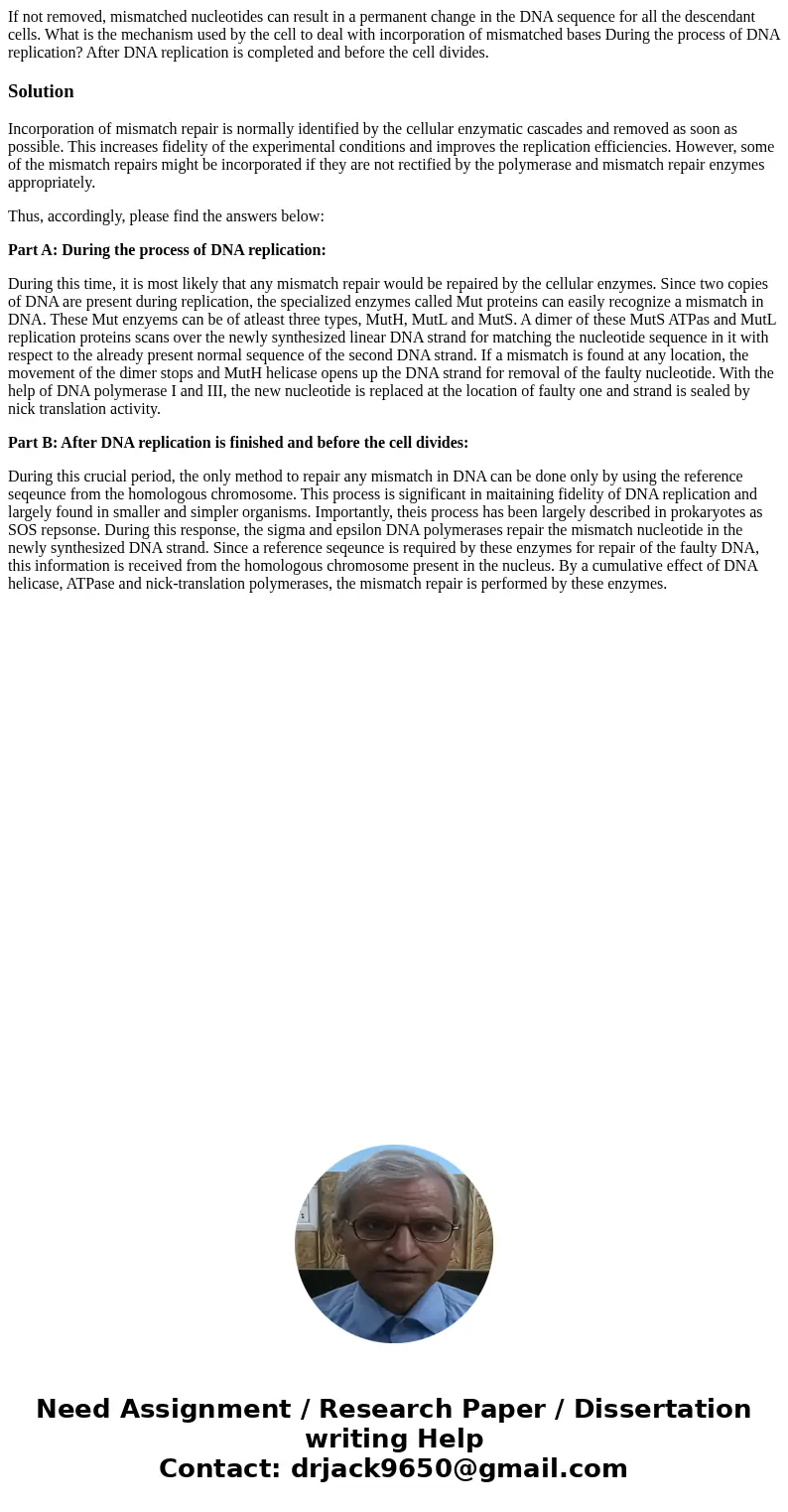If not removed mismatched nucleotides can result in a perman
Solution
Incorporation of mismatch repair is normally identified by the cellular enzymatic cascades and removed as soon as possible. This increases fidelity of the experimental conditions and improves the replication efficiencies. However, some of the mismatch repairs might be incorporated if they are not rectified by the polymerase and mismatch repair enzymes appropriately.
Thus, accordingly, please find the answers below:
Part A: During the process of DNA replication:
During this time, it is most likely that any mismatch repair would be repaired by the cellular enzymes. Since two copies of DNA are present during replication, the specialized enzymes called Mut proteins can easily recognize a mismatch in DNA. These Mut enzyems can be of atleast three types, MutH, MutL and MutS. A dimer of these MutS ATPas and MutL replication proteins scans over the newly synthesized linear DNA strand for matching the nucleotide sequence in it with respect to the already present normal sequence of the second DNA strand. If a mismatch is found at any location, the movement of the dimer stops and MutH helicase opens up the DNA strand for removal of the faulty nucleotide. With the help of DNA polymerase I and III, the new nucleotide is replaced at the location of faulty one and strand is sealed by nick translation activity.
Part B: After DNA replication is finished and before the cell divides:
During this crucial period, the only method to repair any mismatch in DNA can be done only by using the reference seqeunce from the homologous chromosome. This process is significant in maitaining fidelity of DNA replication and largely found in smaller and simpler organisms. Importantly, theis process has been largely described in prokaryotes as SOS repsonse. During this response, the sigma and epsilon DNA polymerases repair the mismatch nucleotide in the newly synthesized DNA strand. Since a reference seqeunce is required by these enzymes for repair of the faulty DNA, this information is received from the homologous chromosome present in the nucleus. By a cumulative effect of DNA helicase, ATPase and nick-translation polymerases, the mismatch repair is performed by these enzymes.

 Homework Sourse
Homework Sourse